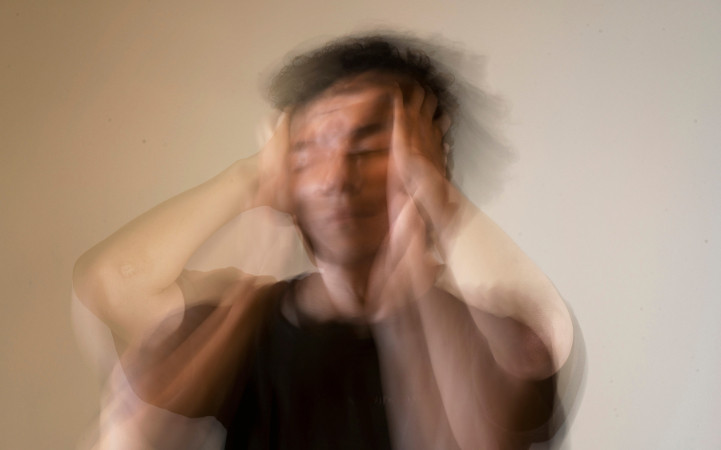
You don’t have to read the headlines to know that there is a lot of traumatic stress in the world today. The nightly news is filled with traumatic events— multiple wars, school shootings, natural disasters, human-caused disasters, and assorted crimes are happening all the time. Watching these events unfold on TV is certainly stressful. But being in these situations is a whole different experience. It is traumatic stress. Read on to better understand this important topic.
Topics covered:
- What is traumatic stress?
- What does traumatic stress look like?
- How does traumatic stress become PTSD?
- How to cope after a traumatic event
- Risk factors for PTSD
- Children and trauma
- Supporting a loved one with PTSD
- Preventing traumatic stress means building resiliency
- More articles on stress
- Resources from the National Institute of Mental Health
What is traumatic stress?

There are three categories of traumatic stress. Acute, chronic, and complex.
Acute traumatic stress
Classified by a single event that is temporary; acute traumatic stress could be anything from a car accident to a natural disaster to an assault. It can also be experienced when you lose a loved one, change a job, or move. Any short-term event threatening your emotional and physical well-being can be considered acute traumatic stress.
Collective trauma events like the pandemic and civil unrest are also acute examples. Even a witness of these events, not necessarily the one experiencing the trauma firsthand, can fall into this category.
Chronic traumatic stress
Exposure to multiple or long-term traumatic events results in chronic traumatic stress. The longer someone experiences this type of trauma, the longer it could take to recover from that trauma. While war and witnessing death are on the extreme end of the spectrum, bullying can also result in this type of stress.
Complex traumatic stress
This type of trauma is often associated with interpersonal relationships involving complicated emotions due to the nature of those relationships. Neglect or childhood abuse, whether of a sexual nature or not, is very complex. Victims of this type of trauma often have a love/hate dynamic with their abusers. The same is true of those who suffer domestic abuse, leaving victims feeling trapped— like a hostage. Another example of complex traumatic stress is when soldiers experience combat.
When it comes to coping with complex feelings, stress, and traumas, you can sometimes seem fine— often telling yourself you are fine. But deeper emotions are quite the contrary and usually find a way to express themselves in ways that can be problematic.
What does traumatic stress look like?

Trauma symptoms have a broad spectrum. Though there are common symptoms, not everyone’s symptoms manifest the same way. In some rare situations, a person does not display any symptoms after traumatic events or the symptoms could be delayed. Here’s a list of some of the symptoms of traumatic stress:
- Easily startled
- Guarded
- Irritable
- Sudden anxiety
- Angry outbursts
- Aggressive behavior
- Excessive worrying
- Destructive behavior
- Can’t focus
- Frequent headaches
- Crying often
- Unable to sleep or stay asleep
- Nightmares or restless sleep
- Flashbacks
- Depression
- Avoiding people and places
- Suicidal behavior
- Shock
- Extreme grief
- Denial
How does traumatic stress become PTSD?
Not everyone develops post-traumatic stress disorder after experiencing trauma. Trauma is always a personal experience. Some people have more resilience than others, and sometimes the psychological harm of the trauma is profoundly impactful. PTSD can happen right away, be delayed, or even never develop, depending on many variables. But rather than self-diagnose yourself or another, it would be good to seek the advice of a mental health professional.
How to cope after a traumatic event

One of the most important things you need to do to cope with trauma is to make sure someone you trust knows about your trauma. They can be a support as needed and just keep an eye on you to make sure you’re doing okay. Make sure you spend time with trusted family and friends, even if you haven’t shared the whole story with them.
Taking care of yourself is vital. Give yourself some time when self-care is a top priority. Eat properly, get good rest, and do some deep breathing and meditation. Continue your exercise and other daily routines. Avoid alcohol use and recreational drugs until your mental health professional tells you it's okay to return to any normal habits.
Seek professional help if symptoms do not improve over time or begin to interfere with daily life. If you are having suicidal thoughts, call 911 or 988 to reach the Suicide & Crisis Lifeline.
Risk factors for PTSD
If you have a history of mental illness, mood disorders, or substance abuse, your risk for PTSD is much higher. Your risk is also higher if you have a family history of mental health problems or substance use. Some occupations increase your risk factor, like first responders (firefighters, police officers, and EMTs).
If you do not have support from friends and family, your risk is higher. Multiple stressful events happening at the same time can increase your risk. Chronic high-level stress and traumatic stress reactions can make you more susceptible to developing PTSD.
Childhood trauma is another risk factor for developing PTSD after traumatic events.
Children and trauma

Few things in this world are sadder than a child experiencing trauma. Here are some of the symptoms of trauma in children:
- Bed-wetting (toilet-trained aged children)
- Refusing to speak or unable to speak
- Being unusually fearful and clingy
- Night terrors and unable to sleep alone
- Acting out the event while playing
- Less expressive and glazed eyes
Teens can experience some of these symptoms, engage in risky behaviors, and experience the same symptoms adults do.
Supporting a loved one with PTSD
One of the most important things anyone can do for a loved one who has experienced trauma or is suffering from Post Traumatic Stress Disorder is to encourage them to get the help they need. At the same time, be patient and do not push them too hard.
- Listen without judgment and be considerate so as not to trigger them
- Offer to talk whenever needed
- Do self-care activities with them
- Be patient while they make their way through the pain and trauma
- Educate yourself on PTSD
Preventing PTSD means building resiliency

You can reduce your overall risk factors for PTSD, as well as manage day-to-day stresses when you regularly tend to your self-care needs. One of the most effective ways to build resiliency is through the breath meditation technique, Sudarshan Kriya, also known as SKY Breath Meditation. Research has shown that SKY is a powerful tool for healing.
Reduces stress hormones by up to 60%
Disclaimer: This content on the Art of Living Blog is not intended to be a substitute for professional medical advice, diagnosis or treatment. Always seek the advice of your physician or other qualified health providers with any questions you may have regarding a medical condition. Any links to third-party websites are provided as a convenience only and the Art of Living Blog is not responsible for their content.





























